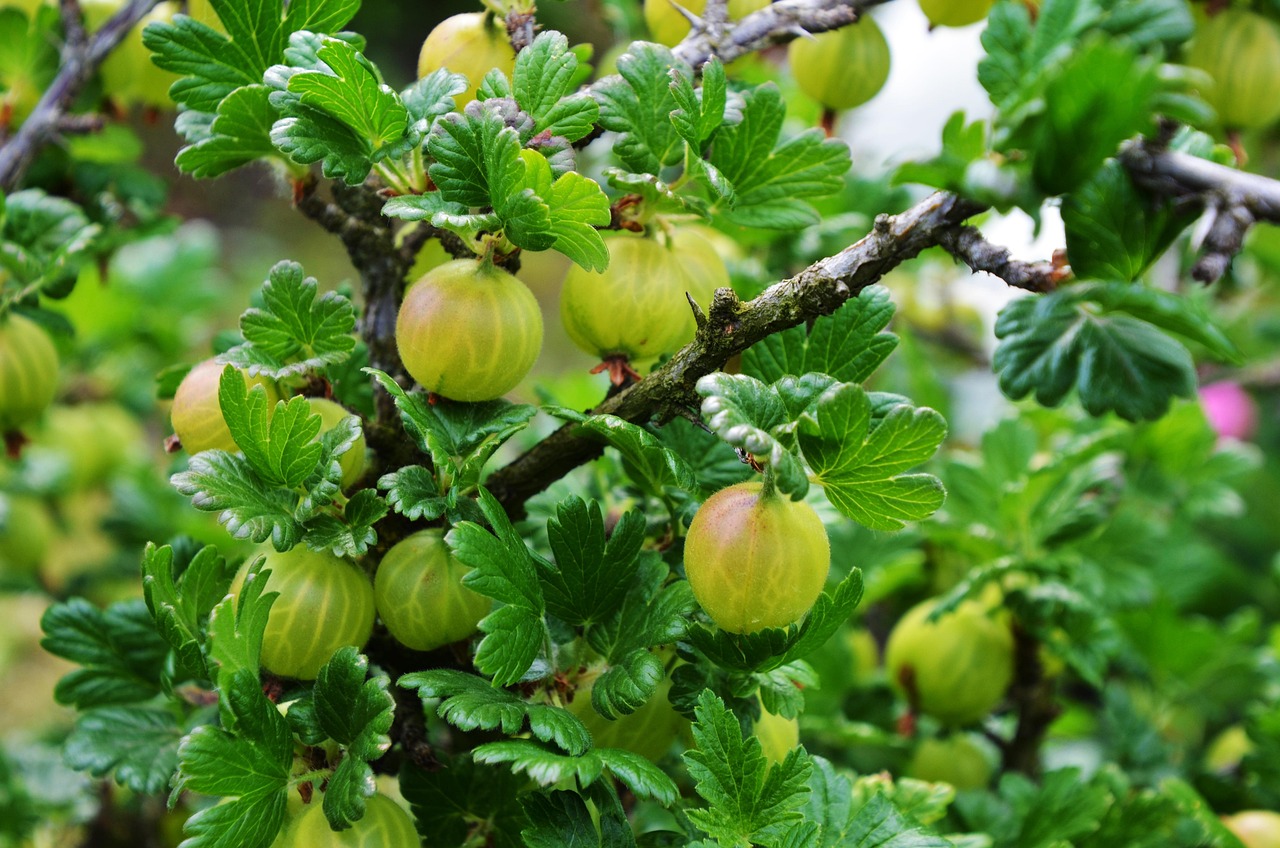
Gooseberry
Ribes uva-crispa
Basic Information
🌿 Family: Grossulariaceae🗺️ Zone: 3-8
Other Names:
- European Gooseberry
🌡️ Ideal Temperature : 60°F – 70°F
🔥 Heat Tolerance: Up to 85°F
❄️ Cold Tolerance: Down to -40°F
🌱 Type: Perennial
Layers
- Shrub
Description
Gooseberry bushes are deciduous shrubs typically growing between 3 to 5 feet (0.9 to 1.5 meters) in both height and width. They have arching branches equipped with sharp spines. The leaves are rounded with 3 to 5 lobes and serrated edges. Flowers are small, greenish-pink, and self-fertile, leading to berries that vary in color—green, yellow, red, or purple—depending on the cultivar. The berries are similar in size and flavor to grapes, with a translucent skin that can be white, yellow, green, or red. Gooseberries thrive in cooler climates and are relatively easy to grow, yielding tart berries ideal for culinary uses.
🌞💧 **Sun and Water Requirements:**
Gooseberries can be grown in full sun as well as partial shade. In warmer climates, they need protection from the hot midday or afternoon sun. They prefer moist, well-drained soils and should be watered regularly to maintain soil moisture.
✂️🫘 **Methods to Propagate:**
Gooseberries can be propagated through hardwood cuttings taken during the dormant season or by layering, where a low branch is bent to the ground and covered with soil until roots develop.
🧑🌾👩🌾 **When to Harvest:**
Berries are typically ready for harvest in mid to late summer, depending on the variety and climate. They should be picked when they have reached full size and exhibit their mature color but before they become overly soft.
Purpose
- **Edible:** Gooseberries are consumed fresh or used in jams, jellies, pies, and desserts due to their tart flavor.
- **Wildlife Attractor:** The berries provide food for various bird species and mammals, supporting local wildlife.
- **Border Plant:** With their dense, spiny growth, gooseberries can serve as effective natural barriers or hedges in garden designs.